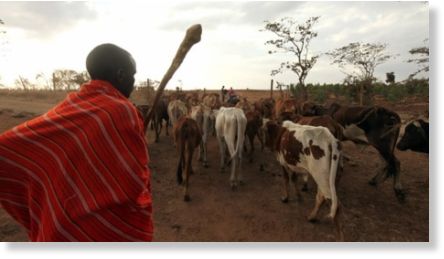
The study suggests the risk of major violence doubles during El Nino, a weather phenomenon which brings hot temperatures and reduced rainfall to tropical regions every five years or so.
A group of researchers from Princeton and Columbia University's Earth Institute looked back over the past half-century, and compared the timing and location of civil wars with the appearance of El Nino Southern Oscillation, or ENSO.
The multi-disciplinary researchers looked at conflicts between 1950 and 2004, where 25 or more people were killed in "battle-related deaths," says the study which was published this week in the journal Nature. That amounted to 234 conflicts in 175 countries.
The group mainly looked at tropical countries that are directly linked -- or "teleconnected" -- to El Nino, and used countries that are weakly affected be El Nino as a comparison.
In the group of countries where El Nino has a direct and significant effect on climate, the study found that annual risk conflict (ACR) is 3 per cent during non-El Nino years.
But when El Nino is present the risk of violence suddenly doubles to 6 per cent.
"This indicates that ENSO may have affected one-fifth (21 per cent) of all civil conflicts during this period," the study states.
In countries that were weakly affected by El Nino the annual risk of conflict was a steady 2 per cent regardless of El Nino's presence.
The report doesn't directly explore the possible reasons for the apparent link between weather and violence. But the authors hypothesize that extreme weather in El Nino years could lead to increased poverty due to poor agricultural output, natural disasters such as cyclones, and disease outbreaks.
"All of these have adverse economic effects, such as loss of income or increasing food prices, and it is thought that economic shocks can generate civil conflict through a variety of pathways," the report says.
"Furthermore, altered environmental conditions stress the human psyche, sometimes leading to aggressive behaviour."
Interestingly, the researchers suggested that average annual income also played a factor in the rate of violence.
When average income was less than US$1,000 per capita in a given country, the three degree temperature increase associated with the switch from a La Nina year to an El Nino year resulted in a 3 per cent increase in the risk of violence.
That increase is the same as the 3 per cent drop in ACR that is associated with raising average income by tenfold, the study says.



Reader Comments
to our Newsletter